Understanding the Critical Role of Capacity Planning in Project Success
Effective capacity planning is essential for ensuring projects are completed on time, within scope, and within budget. In today's dynamic business environment, teams rely on advanced capacity planning tools to forecast resource needs, visualize workloads, and avoid bottlenecks. From real-time resource tracking to predictive analytics, these tools are transforming how organizations manage their assets, personnel, and infrastructure. This article explores the key features of leading capacity planning software, best practices for implementation, and how these tools seamlessly integrate into broader project management strategies to keep projects on track every time.
The Role of Capacity Planning Tools in Project Management
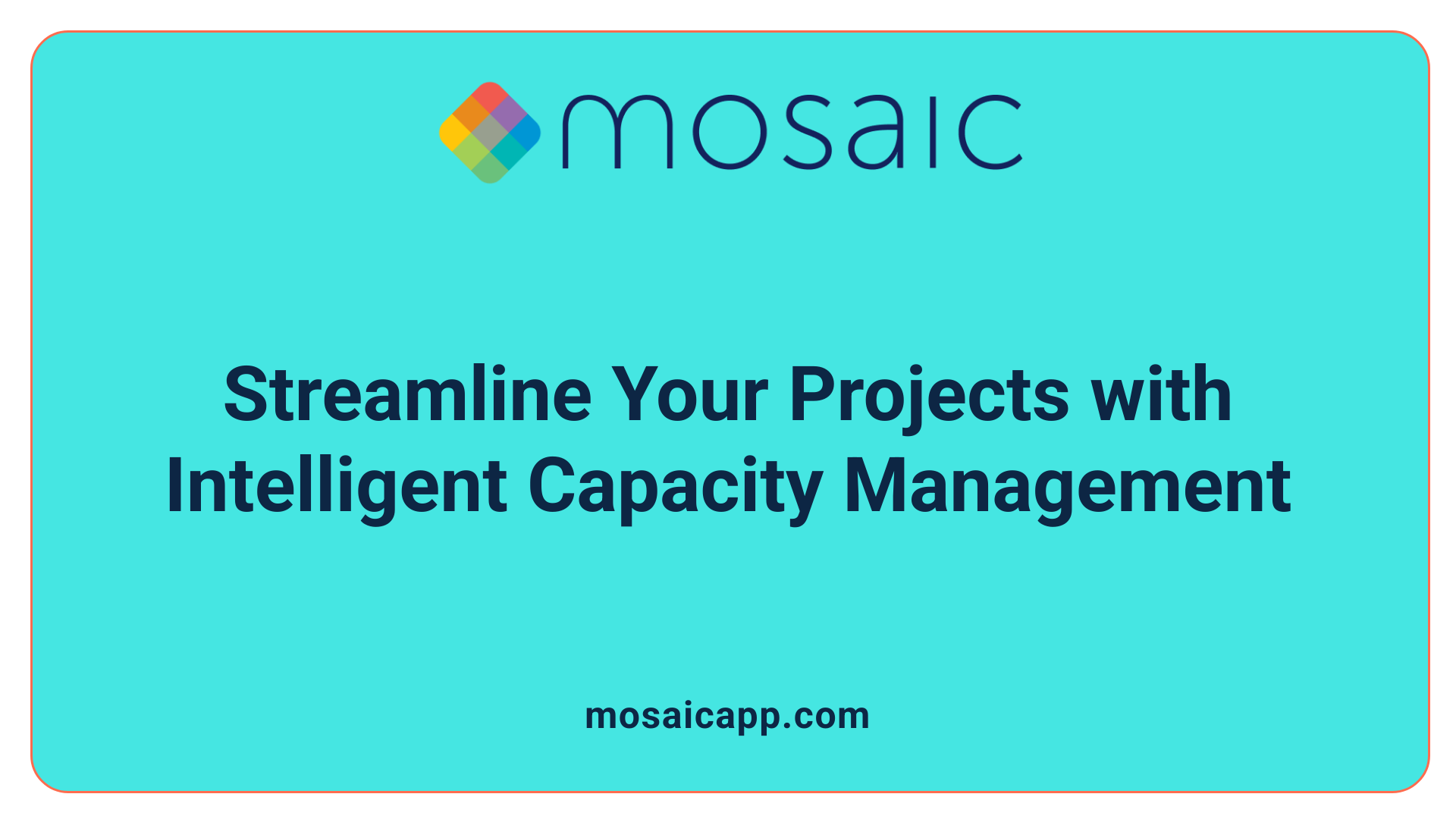 Capacity planning tools are essential in managing complex projects effectively. They help project managers assess the current availability of resources, including team members, equipment, and materials, to ensure that all necessary components are aligned with project demands. By providing real-time data on resource utilization, these tools enable accurate forecasting of future capacity needs, helping organizations prepare for upcoming workload increases or shifts.
Capacity planning tools are essential in managing complex projects effectively. They help project managers assess the current availability of resources, including team members, equipment, and materials, to ensure that all necessary components are aligned with project demands. By providing real-time data on resource utilization, these tools enable accurate forecasting of future capacity needs, helping organizations prepare for upcoming workload increases or shifts.
A critical function of capacity planning tools is their ability to identify potential bottlenecks early. These could be resource shortages, skill gaps, or scheduling conflicts that might delay project timelines. Recognizing these obstacles in advance allows managers to implement corrective actions, such as reallocating tasks or adjusting deadlines.
These tools also facilitate resource allocation by visualizing workloads, tracking availability, and automating adjustments based on project changes. This ensures teams are neither overburdened nor underutilized, improving overall productivity and job satisfaction.
Setting realistic deadlines is another vital aspect supported by capacity planning tools. By understanding current team capacity and skill levels, project managers can establish achievable timelines, reducing the risk of missed milestones and increased costs.
Furthermore, capacity planning tools promote better communication and transparency among teams and stakeholders. They offer clear visibility into project status, resource workload, and potential risks, enabling informed decision-making and stakeholder confidence.
In summary, these tools serve as a backbone for successful project execution, helping teams stay on track, optimize resources, and adapt swiftly to changing demands. Their role is vital in reducing delays, controlling costs, and increasing the likelihood of project success.
Key Features and Functionalities of Effective Capacity Planning Software
What are the key features of effective capacity planning software?
Effective capacity planning software must encompass several core features to ensure optimal resource utilization and project success. One fundamental aspect is demand forecasting, which predicts future workload and helps in proactive resource allocation. Resource scheduling allows managers to assign tasks efficiently, considering availability and skills, reducing idle time and overwork.
Workload management tools provide a clear view of team members' current and upcoming responsibilities, enabling better balancing of effort across projects. Performance dashboards and customizable reports facilitate ongoing monitoring of resource utilization, highlight bottlenecks, and support data-driven decisions.
Seamless integration capabilities with existing enterprise systems—such as ERP, CRM, and project management platforms—are vital for smooth data flow and cross-department collaboration. Real-time data tracking ensures that managers respond promptly to dynamic project demands and changing team capacities.
Advanced functionalities like scenario analysis allow forecasting the impact of different resource allocation strategies, supporting strategic planning. AI-driven insights can identify potential risks and optimize workflows automatically, enhancing operational efficiency.
User-friendly interfaces make these tools accessible to a broad range of users, ensuring quick adoption and effective use. By combining these features, capacity planning software helps organizations minimize costs, prevent burnout, and adapt swiftly amid market or project changes.
Implementing Capacity Planning: Best Practices
What are best practices for implementing capacity planning in project management?
Efficient capacity planning begins with an accurate assessment of current resources and workload demands. Organizations should evaluate their team's capabilities, current utilization rates, and future project requirements. Using tools such as Gantt charts, dashboards, or specialized software like Smartsheet or Resource Guru helps visualize and analyze data effectively.
Involving stakeholders early in the process ensures the capacity plan reflects real operational needs and gains buy-in from all relevant teams. Regular updates and ongoing monitoring are crucial, as project demands can rapidly change. Tools that provide real-time reporting, such as monday.com or Toggl Plan, enable teams to detect overcapacity or underutilization quickly and make necessary adjustments.
Cross-functional collaboration enhances the planning process by bringing together departments like HR, finance, and operations. Joint reviews of capacity and demand help uncover skill gaps and potential bottlenecks before they impact project timelines.
Risk assessment is another important practice. Analyzing past projects to identify previous issues, such as resource overextension or delays, informs better planning. Scenario modeling with AI-powered tools like Forecast or Runn allows teams to prepare for different demand fluctuations.
Aligning capacity planning with the organization’s strategic goals ensures resources are directed toward priority projects. This strategic alignment maximizes value and supports long-term objectives.
Finally, learning from past experiences enhances future planning. Reviewing previous project outcomes, resource utilization data, and stakeholder feedback informs continuous improvement.
By integrating these practices—accurate assessment, stakeholder engagement, regular updates, effective tools, cross-team collaboration, risk analysis, strategic alignment, and lessons learned—organizations can optimize resource allocation, improve project success rates, and maintain team well-being.
Benefits of Capacity Planning Tools in Resource Management and Scheduling
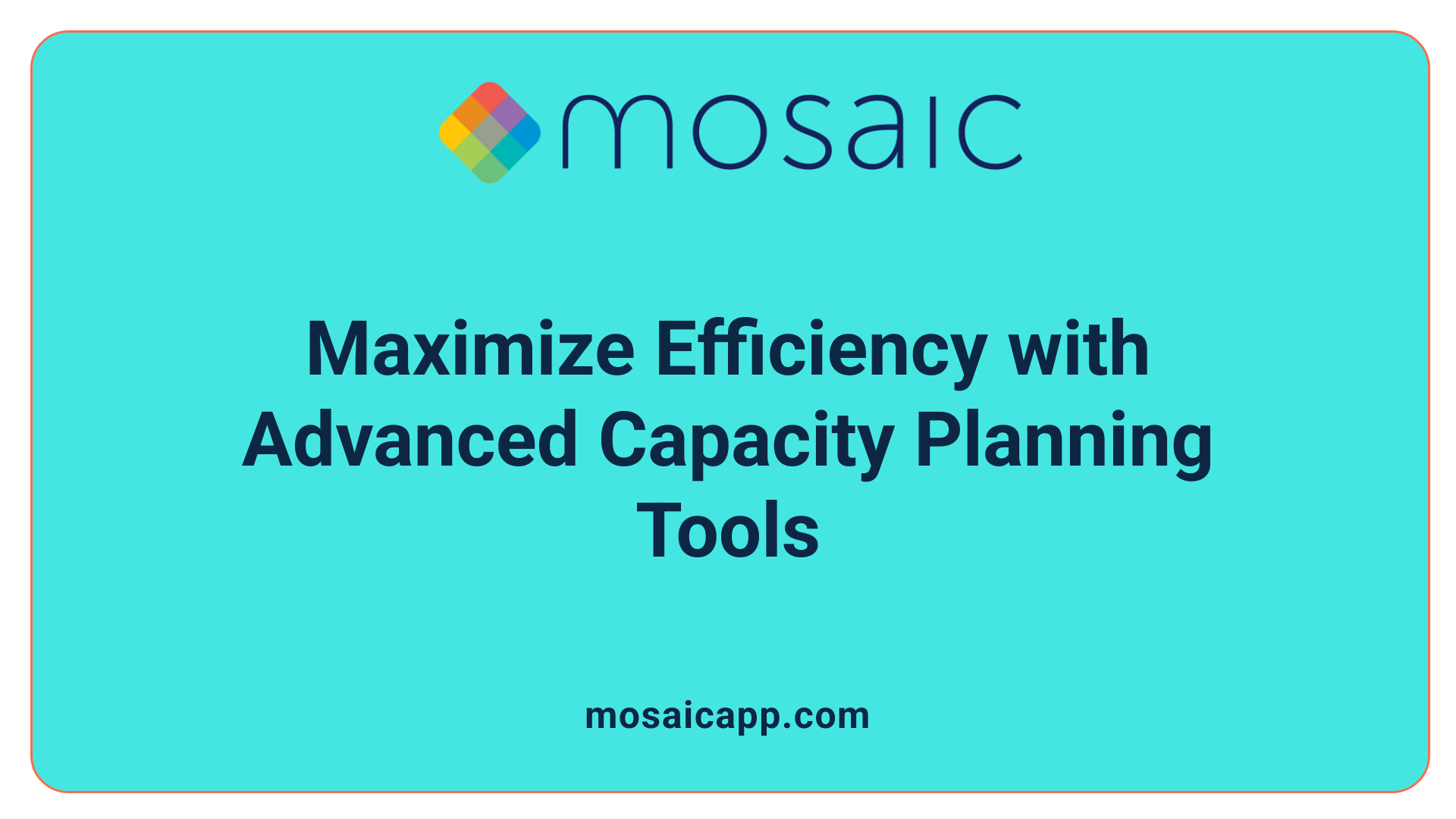
How can capacity planning tools benefit resource management and project scheduling?
Capacity planning tools are vital for efficient resource management and effective project scheduling. They offer a clear, real-time view of resource utilization, allowing managers to see who is working on what, when, and how heavily. This transparency helps prevent overloading team members and reduces burnout by keeping workload balanced.
With data-driven insights, organizations can accurately forecast future resource needs, identify gaps in skills or capacity early, and make necessary adjustments before issues arise. This proactive approach ensures that projects stay on track and meet deadlines without unnecessary delays.
An important advantage of these tools is their ability to support strategic planning. They enable teams to prioritize projects according to available resources, making sure the most critical tasks are addressed first. Additionally, scenario analysis and what-if simulations allow organizations to prepare for potential challenges—like sudden increases in demand or resource shortages—by testing different solutions without risking actual project outcomes.
Overall, capacity planning tools contribute to operational efficiency by optimizing resource use, ensuring projects are completed on time, and saving costs. They empower project managers and teams to make smarter decisions, adapt quickly to changing circumstances, and improve the chances of project success.
Comparison of Leading Capacity Planning Tools
How do different capacity planning tools compare?
Choosing the right capacity planning tool depends on understanding their core functionalities and how they meet your organization’s needs. Many tools offer critical features such as resource scheduling, demand forecasting, and real-time analytics to optimize project delivery and resource utilization.
For example, Resource Guru specializes in resource allocation and workload visualization through heatmaps, making it easier for teams to see current capacities and avoid overbooking. Saviom provides advanced forecasting, including real-time capacity vs. demand charts, making it suitable for larger enterprises with complex project demands.
Ease of use and customization vary across platforms. Tools like Float and Toggl Plan focus on user-friendly interfaces and flexible scheduling, ideal for smaller teams or those new to capacity planning. Conversely, more intricate solutions like Acuity PPM and BigTime cater to organizations requiring detailed analytics, scenario modeling, and extensive customization.
Integration capabilities are crucial, especially for teams using diverse systems. Many tools, including Scoro, Runn, and BigTime, offer integrations with project management software like Jira, Outlook, or Slack. This facilitates seamless data flow, reducing manual updates and errors.
Pricing models range from subscription-based to enterprise licensing, influencing scalability. Tools such as Capacity Guru and Ganttic serve small to medium teams with scalable plans, whereas comprehensive platforms like Parallax or Scoro accommodate larger organizations with complex needs.
Industry-specific features are emerging, with solutions tailored for manufacturing, IT, or service sectors. For instance, machinery uptime tracking in manufacturing or server load balancing in IT needs specialized tools, which some providers now incorporate.
AI and predictive analytics are shaping future capacities. Forecast and other platforms leverage AI algorithms to predict project timelines and staffing needs, offering proactive planning insights. This trend enhances accuracy and saves time.
User experience and learning curves vary. Simpler tools prioritize quick onboarding and minimal training, while advanced solutions require dedicated effort but provide more detailed data analysis.
| Tool Name | Core Functionalities | Ease of Use | Integrations | Pricing & Scalability | Industry Focus | AI Features | User Learning Curve |
|---|---|---|---|---|---|---|---|
| Resource Guru | Resource scheduling, workload visualization | User-friendly, intuitive | Outlook, Slack, others | Scalable plans, affordable | General, service sectors | Limited, some automation | Low |
| Saviom | Demand forecasting, enterprise resource planning | Complex, suitable for large organizations | Multiple ERP, CRM | Enterprise pricing, high scalability | Manufacturing, large enterprises | Advanced predictive analytics | Medium to high |
| Scoro | Workload management, Gantt charts, automation | Moderate, customizable | Jira, Outlook, others | Subscription, tiered pricing | Business services, marketing teams | Basic AI predictions | Medium |
| Float | Visual timelines, workload charts | Very easy, accessible | Calendar apps, Slack | Subscription, flexible options | Small to medium teams | None | Low |
| BigTime | Resource forecasting, detailed analytics | High, for advanced users | Time tracking, project tools | Enterprise, tiered | Consulting, professional services | Yes, predictive modeling | Medium to high |
Overall, organizations should evaluate their specific needs, size, and industry trends. Increasing AI integration and automation are expected to continue improving planning accuracy and efficiency, making these tools invaluable for proactive resource management.
Strategies for Successful Capacity Planning
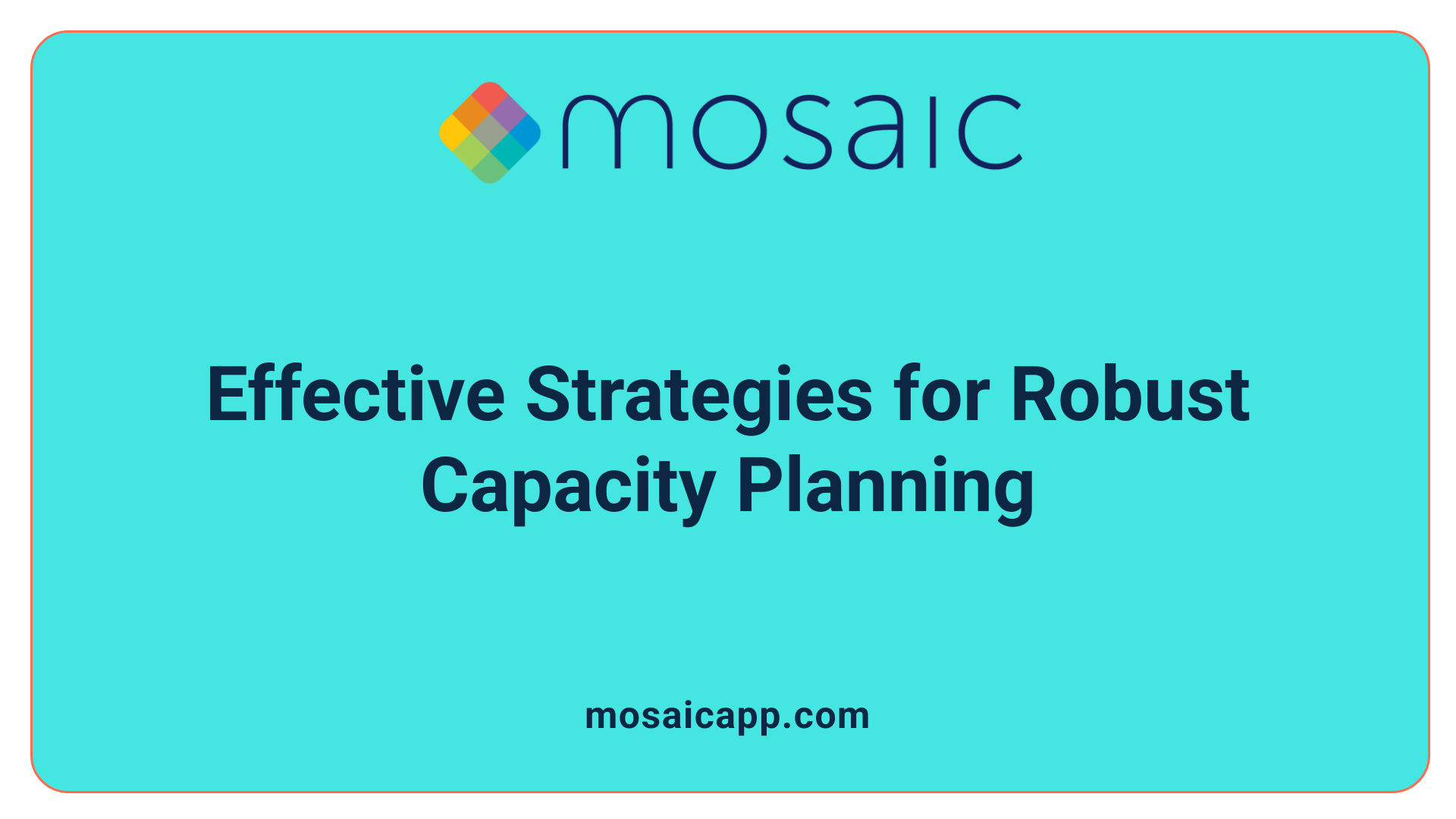
What strategies can improve the success of capacity planning in projects?
Effective capacity planning depends heavily on selecting the right strategies that match organizational needs and project demands. The three main approaches—lead, lag, and match—each serve different purposes.
- Lead strategy: Preparing resources in advance to meet anticipated demand. This proactive approach reduces delays and ensures capacity is available when needed.
- Lag strategy: Adding capacity only after demand has increased, which helps prevent overinvestment in resources during periods of low activity.
- Match strategy: Gradually increasing or decreasing capacity in line with demand, maintaining a balanced and efficient resource allocation.
In addition to choosing suitable strategies, leveraging advanced tools like scenario analysis, forecasting models, and dedicated capacity planning software enhances visibility and accuracy. These tools help simulate different demand scenarios, forecast future needs, and identify potential shortfalls before they impact projects.
A structured process involving demand forecasting, capacity assessment, gap identification, and ongoing monitoring supports continuous adjustment and improvement. Consistent review of capacity utilization enables organizations to be flexible—shifting strategies as organizational or project needs evolve.
Cross-functional collaboration is vital; engaging teams from business, IT, and operations fosters shared understanding and early detection of bottlenecks. Regular capacity audits ensure resources are aligned with changing project requirements, preventing overuse and burnout.
Finally, maintaining a flexible mindset allows companies to adapt swiftly in dynamic environments. By integrating these strategies and practices, organizations can optimize resource use, reduce costs, and improve project delivery success.
Integration with Other Project Management Processes
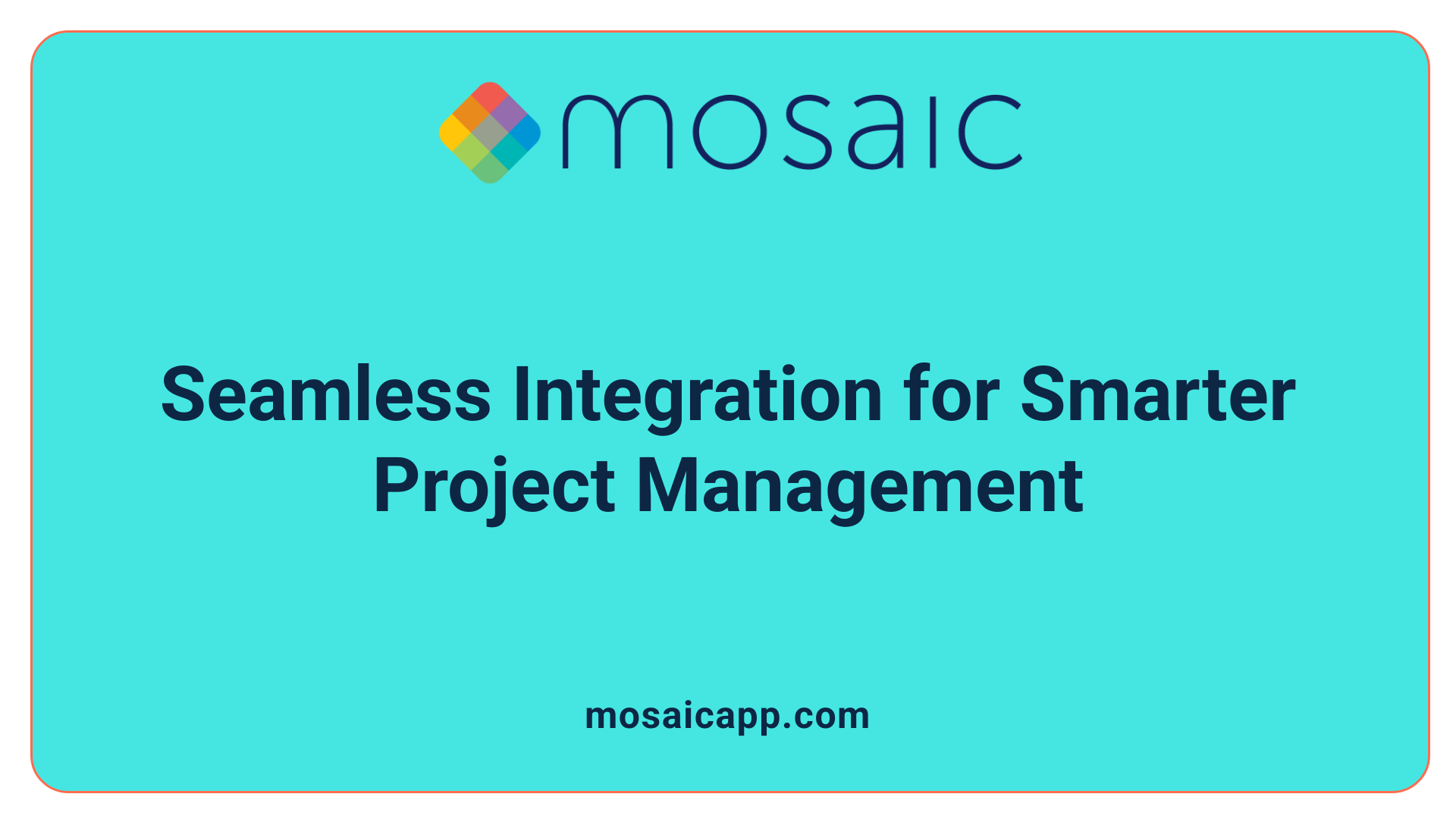 Capacity planning tools do not operate in isolation; they are designed to work seamlessly with a wide range of project management processes to optimize project execution.
Capacity planning tools do not operate in isolation; they are designed to work seamlessly with a wide range of project management processes to optimize project execution.
One of the main aspects of integration involves connecting capacity planning systems with scheduling and resource management tools. For example, many platforms support integration with popular applications like Jira, Outlook, Slack, and Google Calendar. This enables project managers to get a real-time view of team workloads, deadlines, and resource availability—all in one consolidated dashboard. As a result, team members can be assigned tasks based on accurate capacity data, helping to prevent overloading and ensuring balanced workloads.
Linking capacity planning with risk management and financial systems is also crucial. These connections allow teams to forecast potential bottlenecks, evaluate budget constraints, and adjust plans proactively. For instance, if resource over-utilization is detected, financial adjustments or project scope modifications can be made early, reducing the risk of delays or cost overruns.
Furthermore, these integrations foster better operational coordination across multiple teams and departments. When systems communicate smoothly, it becomes easier to align project timelines with business objectives, track progress, and make informed decisions quickly.
Below is a summary table illustrating how capacity planning tools integrate with various project management components:
| Integration Area | Examples of Tools/Systems | Benefits | Details |
|---|---|---|---|
| Scheduling & Resource Management | Jira, Microsoft Project, Google Calendar | Real-time workload views | Enable dynamic task assignments and resource leveling |
| Communication & Collaboration | Slack, Microsoft Teams, Email | Improved coordination | Facilitate prompt updates and team discussions |
| Risk & Financial Systems | SAP, Oracle ERP, QuickBooks | Budget & risk forecasting | Assist in adjusting plans based on financial and risk data |
| Operational Tools | CRM, Helpdesk Software | Unified workflows | Streamline project delivery processes |
In essence, through these integrations, capacity planning becomes a strategic component embedded within the broader project management ecosystem. This interconnected approach ensures projects are more predictable, resources are utilized efficiently, and teams operate cohesively—ultimately leading to higher chances of project success.
Emerging Trends and Future of Capacity Planning Tools
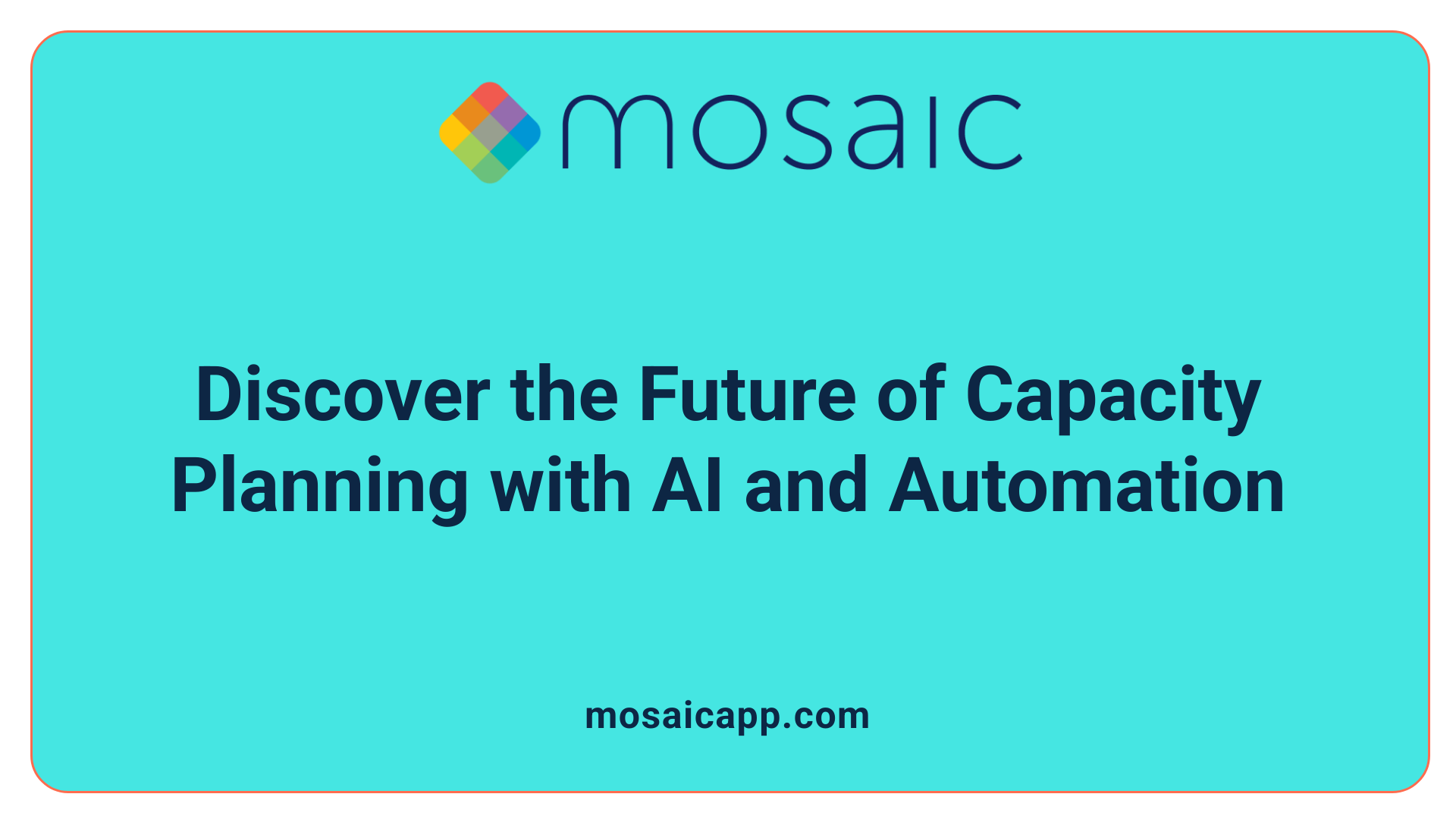
How are AI and predictive analytics shaping capacity planning?
Artificial intelligence (AI) and predictive analytics are revolutionizing capacity planning by providing more accurate forecasts and smarter decision-making tools. These advanced technologies analyze historical project data, team performance, and resource utilization, enabling organizations to predict future capacity needs with higher precision. For instance, AI algorithms can identify patterns and forecast potential bottlenecks before they occur, allowing teams to proactively adjust their plans.
What role do automation and machine learning play in capacity management?
Automation and machine learning (ML) are streamlining routine tasks in capacity planning, such as updating resource dashboards, generating reports, and adjusting schedules based on real-time data. ML models learn from project outcomes to optimize resource allocation, rescheduling, and workload balancing dynamically. This automation reduces manual effort, minimizes errors, and ensures that capacity planning remains responsive to changing project demands.
Are there industry-specific solutions enhancing capacity planning?
Yes, tailored solutions are emerging to meet the unique needs of various sectors. For example, manufacturing industries utilize machinery uptime tracking and maintenance scheduling tools, while IT firms prioritize server load balancing and network capacity management. These specialized tools address sector-specific operational challenges, making capacity planning more effective and relevant for different industries.
How is data-driven decision-making transforming capacity planning?
Data-driven decision-making is central to modern capacity planning. By integrating real-time data from diverse sources—such as time tracking, project management, and employee availability—teams can make informed choices about resource allocation and project timelines. Visualization tools like heatmaps and dashboards help managers quickly interpret complex data, identify gaps, and plan accordingly, leading to better project outcomes and optimized resource use.
What is the significance of scalability and cloud integration?
As organizations grow, scalability becomes crucial. Cloud-based capacity planning tools offer scalable solutions that can adapt to increasing project loads without hardware limitations. Cloud integration also enables seamless access to updated data from anywhere, fostering collaboration across dispersed teams and ensuring that capacity planning remains agile and comprehensive.
| Trend | Description | Benefits |
|---|---|---|
| AI & Predictive Analytics | Use of AI for forecasting and decision support | Higher accuracy, proactive management, early bottleneck detection |
| Automation & Machine Learning | Automating routine tasks and dynamic rescheduling | Reduced manual effort, faster decision cycles, error reduction |
| Industry-Specific Solutions | Customized tools for different sectors | Better operational fit, sector-specific insights |
| Data-Driven Decision-Making | Real-time data visualization and analysis | Enhanced planning accuracy and responsiveness |
| Scalability & Cloud Integration | Cloud-based, scalable capacity planning solutions | Flexibility, remote access, collaborative planning |
Future capacity planning tools are expected to leverage these advancements to deliver smarter, faster, and more adaptable solutions. As technology continues to evolve, organizations will benefit from improved precision and the ability to quickly respond to project and operational demands.
Conclusion: Keeping Projects on Track with the Right Tools
How do capacity planning tools benefit project management?
Capacity planning tools are vital for ensuring projects stay on schedule and within budget. They offer real-time visibility into team workloads, resource availability, and project demands. By providing detailed visualizations such as Gantt charts, heatmaps, and dashboards, these tools enable project managers to identify potential bottlenecks early, adjust allocations promptly, and forecast future resource needs accurately.
Moreover, these tools facilitate better collaboration across teams by integrating with other business functions, allowing for a unified view of project progress and resource use. Features such as scenario modeling and automated updates help anticipate the impact of changes, supports strategic decisions, and improves overall project efficiency.
Why is it important to select suitable capacity planning solutions?
Choosing appropriate tools depends on organizational requirements, project complexity, and the industry in which a team operates. For instance, manufacturing teams may benefit from machinery uptime tracking, while IT teams require server load balancing solutions. Essential features include resource tracking, visualization options, automation abilities, scalability, and seamless integration with existing systems.
Selecting the right software, like monday work management, Resource Guru, or BigTime, ensures that capacity planning aligns with business goals and operational workflows. It enhances planning accuracy, optimizes resource utilization, and reduces risks of burnout and project delays.
How does continuous improvement and adaptation impact capacity planning?
Capacity planning is not a one-time activity; it requires ongoing monitoring, evaluation, and adjustment. Regularly reviewing utilization data and project demands helps teams respond to variability and unforeseen challenges swiftly. Incorporating feedback from project outcomes, analyzing performance metrics, and updating plans accordingly foster a culture of continuous improvement.
Advanced tools equipped with predictive analytics and scenario planning support organizations in adapting strategies—be it lead, lag, or matching capacity—to dynamic environments. This flexibility helps maintain efficiency, prevent resource strain, and facilitate scaling operations smoothly.
Why is a collaborative approach essential?
Effective capacity planning hinges on collaboration across different departments—business, IT, facilities, and project teams. Sharing data, insights, and forecasts helps avoid silos and mismatches in resource availability. Regular cross-team communication ensures everyone is aligned on priorities, upcoming demands, and capacity limitations.
Involving stakeholders at all levels promotes transparency and facilitates proactive decision-making. This collaborative spirit not only improves planning accuracy but also enhances team morale and fosters accountability.
What strategies can improve the success of capacity planning in projects?
To improve the success of capacity planning in projects, organizations should adopt a comprehensive approach involving strategic selection of methods—such as lead, lag, or match planning—as suited to specific project demands and business context. Leveraging advanced forecasting tools, scenario modeling, and real-time reporting enhances visibility and decision-making.
Establishing a structured process that includes demand forecasting, capacity assessment, gap analysis, and continuous monitoring is crucial. Engaging cross-disciplinary teams ensures diverse insights and early problem detection. Flexibility to switch between strategies, regularly reviewing capacity utilization, and adjusting plans as needed enable organizations to optimize resource use, reduce costs, and increase project success rates.
In summary, choosing the right capacity planning tools and strategies, committed to ongoing improvement and collaborative effort, greatly enhances the ability to deliver projects efficiently, meet deadlines, and maintain team wellbeing.
Final Thoughts: The Power of Effective Capacity Planning
Employing the right capacity planning tools and adhering to best practices significantly elevate project management efficacy. They enable organizations to anticipate demands, optimize resource utilization, and respond swiftly to changes, ultimately ensuring projects are completed successfully, on time, and within budget. As technology advances, embracing innovative solutions such as AI and automation will further enhance capacity planning capabilities. Continuous learning, collaboration, and strategic alignment with business objectives are essential for maintaining a competitive edge in project delivery.
References
- 20 Best Capacity Planning Software To Improve Utilization ...
- 12 Best Capacity Planning Tools for Resource ...
- 7 Best Capacity Planning Tools for Agencies & Consultancies
- The 6 best capacity planning tools
- Resource Capacity Planning Guide
- What Is Capacity Planning and Should You Use It? [2025]
- Team capacity planner for project management: benefits ...
- Capacity Planning Tool: Best Software for 2025
- 20 Best Capacity Planning Software To Improve Utilization ...
- What is Capacity Planning? Beginner's Guide | Team Central


